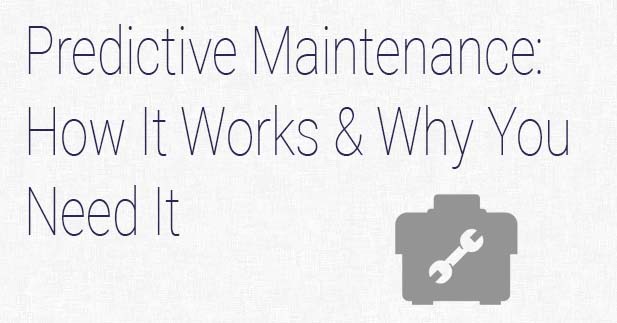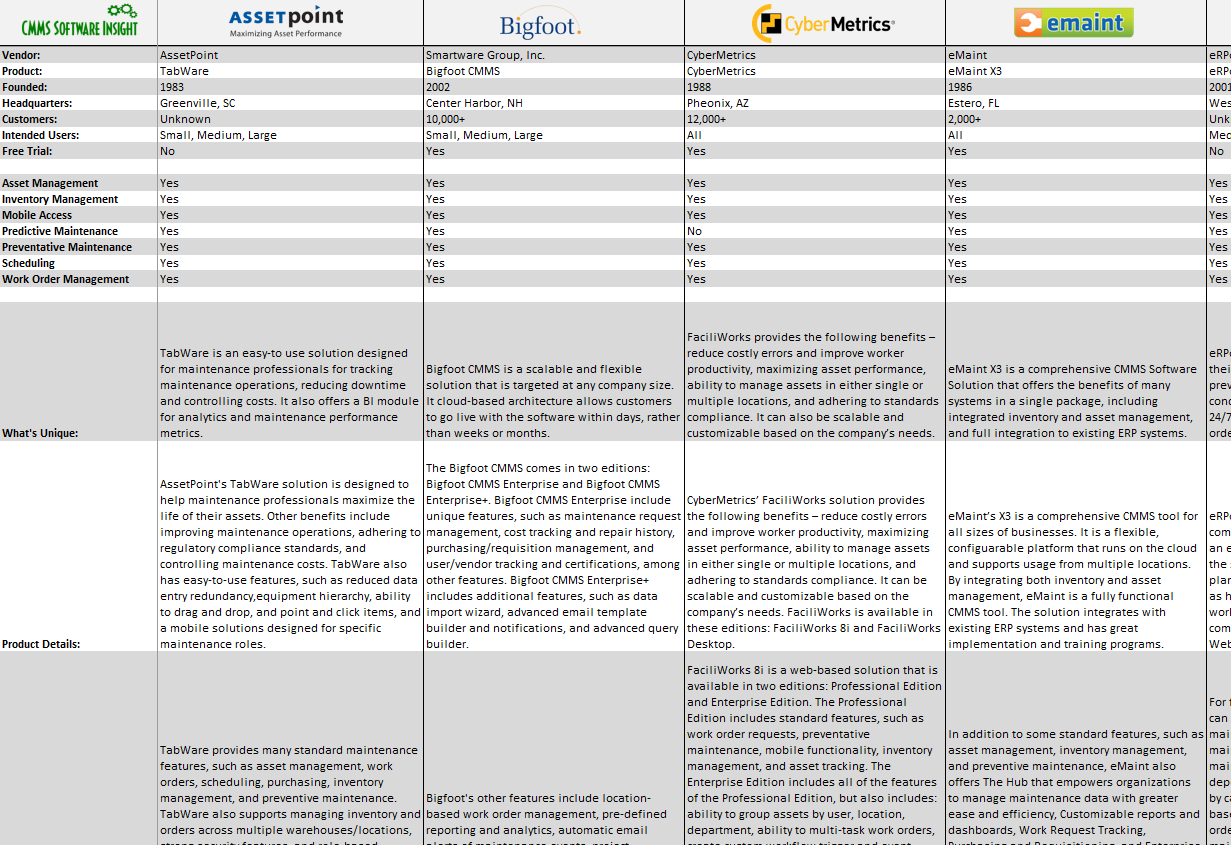Maintenance has always been a major business headache.
Computerized maintenance management systems (CMMS) have recently become more refined and robust, practically eliminating the manual methods required before. With features to manage and maintain your assets, inventory and work orders, proactive maintenance strategies have become second nature in a production workflow.
The true test, though, is being able to predict when an asset will breakdown.
Now that the technology is readily available to all types of companies, predictive maintenance (PdM) has become the next level of maintenance routines.
How It Works
Predictive maintenance combines preventive and condition-based maintenance techniques to create a highly accurate way of collecting and evaluating asset data to pinpoint required maintenance tasks.
According to multinational engineering and electronics experts, Bosch, predictive maintenance offers three additional benefits over other maintenance methods: capturing sensor data, facilitating data communications and making predictions.
Capturing Sensor Data
Much like condition-based maintenance, PdM uses condition-monitoring equipment to evaluate an asset’s wear and efficiency in real-time.
Although experts are constantly observing assets in this maintenance method, they can’t always identify internal problems. Here are a few common condition-monitoring tools used in predictive maintenance:
- Infrared thermography analysis – Without disrupting productivity, an infrared imager evaluates the temperature profile of a piece of equipment to keep it from overheating and failing.
- Ultrasonic analysis – This puts the frequencies an asset is making into auditory or visual signals to be evaluated. The frequencies measured are generated from equipment issues like faulty electrical equipment, leaky valves, unlubricated bearings, etc.
- Current analysis – Measuring the current and voltage of electricity supplied to an electric motor is important. This detects rotor bar problems as well as issues with belts and couplings.
- Vibration analysis – This is to measure displacement, velocity or acceleration to determine issues like misalignment, imbalance, looseness, wear and more.
- Oil analysis – Oil analysis checks the lubrication of an asset. This determines the machine’s health, the lubricant’s health and when either one has been contaminated.
Facilitating Data Communications
From wearable fitness trackers to signal-sending trash cans to adaptable HVAC units, the Internet of Things has made it easier than ever to collect, share and react to data.
The sensors and tools used for PdM foster this type of communication as well.
Collecting information in real time, the condition-monitoring equipment needed for PdM is connected to a central hub that stores the data. This can be done using a WLAN- or LAN-based connectivity platform or with cloud technology depending on security requirements, asset mobility, etc.
Having the central hub automatically updated makes it easy to process, organize and retrieve asset data.
Making Predictions
Going beyond the capabilities of condition-based maintenance, the data collected by PdM tools is analyzed using algorithms to identify trends and determine when an asset will need to be repaired, retired or replaced.
The algorithms are based on a set of rules that combines both expected behavior (from initial data entry) and the gradual deterioration of an asset. Through continual evaluation and data capture, the application is able to effectively predict when a piece of equipment will need attention.
Companywide Benefits
According to strategy consultants Roland Berger, maintenance professionals spend about 15% of their time on predictive activities. However, they would like to spend 33% of their time on predictive maintenance to reduce the amount of reactive and preventive maintenance needed.
Why is this?
Predictive maintenance provides benefits that improve the bottom line and impact the company as a whole. Below, we discuss the top three:
- Full visibility – Like stated above, the tools used to evaluate an asset’s performance are able to identify equipment issues that aren’t easily noticed by expert observation. Instead of relying on time passed or a sensory trigger, this can match asset symptoms to a specific maintenance activity, lowering maintenance costs.
- Cost effective – Predictive maintenance can save vital company resources. By predicting when an unavoidable failure will occur, this maintenance method reduces the need for last-minute purchases or storage of replacement parts for critical equipment.
- Reliability – Instead of regularly shutting down a piece of equipment to conduct preventive maintenance tasks, PdM determines when maintenance is needed based on the asset’s wear. This reduces downtime and increases productivity by ensuring a piece of equipment remains operating until right before an imminent
failure. In fact, as stated in the Roland Berger report, energy companies that implemented predictive maintenance programs eliminated 75% of breakdowns.
Predictive maintenance is quickly becoming the next level of maintenance strategies for successful businesses. With its long-term, cost-effective benefits, your company will be able to relieve maintenance headaches and stay a step ahead of the competition. Because robust CMMS solutions are available for all types of companies, it’s never been so simple to invest in your company’s future.

 Choosing a CMMS vendor is all about finding the right fit. Use our Vendor Comparison Guide to get an objective look at the top solutions.
Choosing a CMMS vendor is all about finding the right fit. Use our Vendor Comparison Guide to get an objective look at the top solutions.